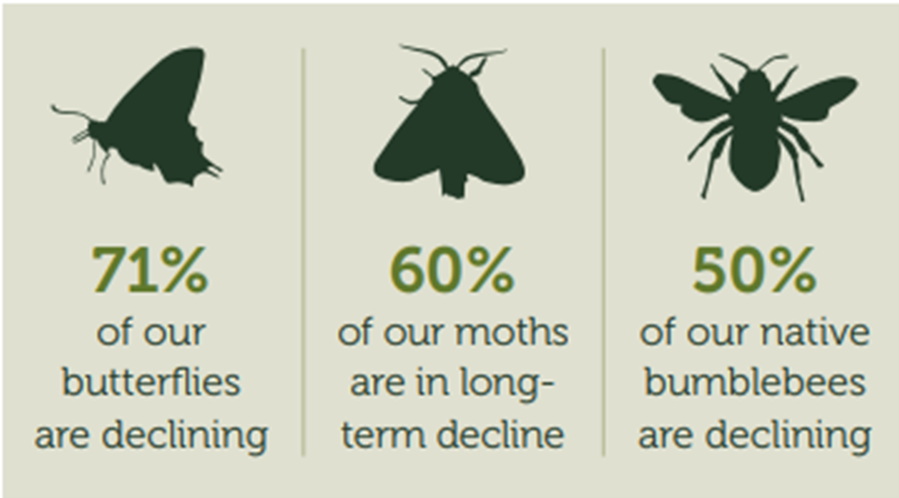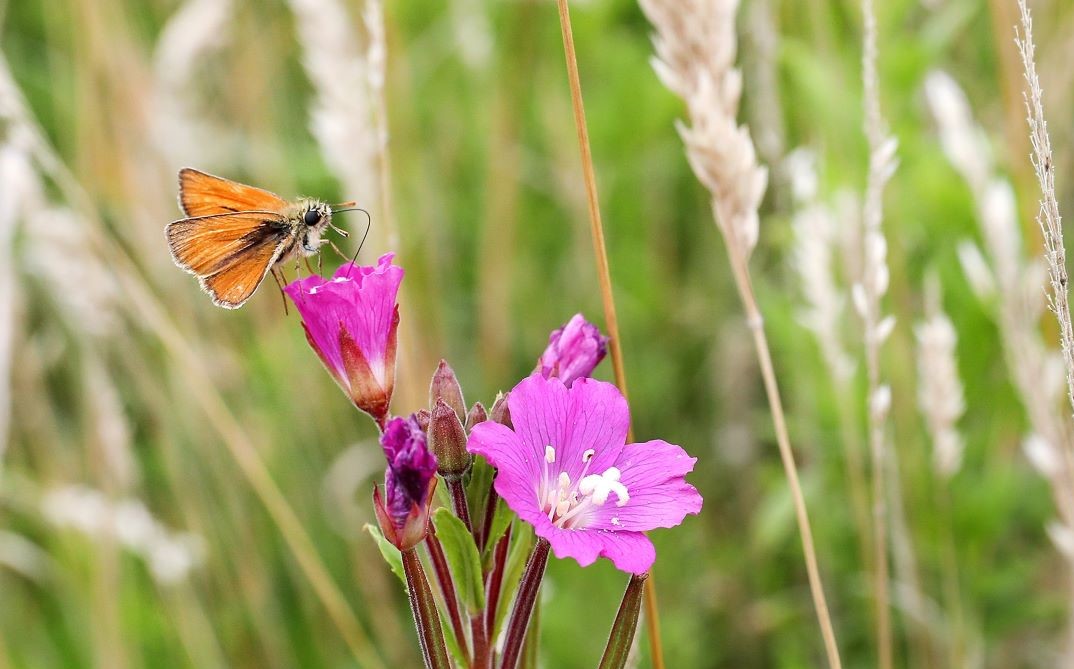
Developing pollinator pathways
With one in every three mouthfuls of food we eat depending on pollination, pollinators are a vital part of our ecosystem. Sadly, they are in decline across the UK due to climate change, the use of certain harmful pesticides, and intensive farming. We are working in partnership with Severn Trent to give pollinators in the Forest a helping hand.
Pollinators in decline

There are over 4,000 species of insect in the UK that pollinate our native plants and our food crops including many species of bees, butterflies, flies, and wasps. They are an intrinsic part of our ecosystem and essential to the food chain.
Sadly, pollinators across the UK are in decline, with the most significant cause being the loss and degradation of wildflower-rich grassland habitats, which provide food, shelter, and nesting sites for pollinators. Over 97% of our wildflower meadows have been lost since the 1930s, equating to 7.5 million acres.

Here at the Heart of England Forest, we are committed to changing this, creating a haven for our vital pollinators to thrive.
Pollinator partnership
In the summer of 2020, we embarked on a five-year partnership project with Severn Trent, to create more wildflower-rich grassland and give our pollinators a helping hand. As part of this, we have started to create 30-metre wide pollinator pathways covering 168 acres within the 2,471 acres of woodland in the Spernal area of the Forest.
What is a pollinator pathway?
As habitat is lost and becomes fragmented, species become isolated in pockets of habitat. A pollinator pathway is a corridor of native plants that connects different areas of habitat, providing nutrition and homes for pollinators and helping them to disperse into new areas.
A pollinator pathway effectively links up different areas of habitat, allowing insects to travel between them to access the food and shelter that they need.
Superhighways for pollinators

Improving wildflower diversity in the existing grassy rides in the Forest will encourage pollinators to thrive in these areas.
We are doing this by sowing a mix of wildflowers specially designed to provide a good source of nectar and pollen for our pollinators. This mix includes twenty different native wildflowers such as lady's bedstraw, black knapweed, meadow vetchling and yellow rattle. We will then manage these rides to allow wildflower seeds to compete and establish against the more dominant grasses.
The Forest is already a haven for wildlife, but with new and improved pollinator pathways we will be providing ‘superhighways’ for insects and making a positive contribution to our vital Nature Recovery Network.
How you can help
Every year, our volunteers help us monitor pollinators in the Forest. If you would like to find out more about getting involved in our wildlife surveys, such as butterfly transects or bee walks, visit our volunteering web area.



